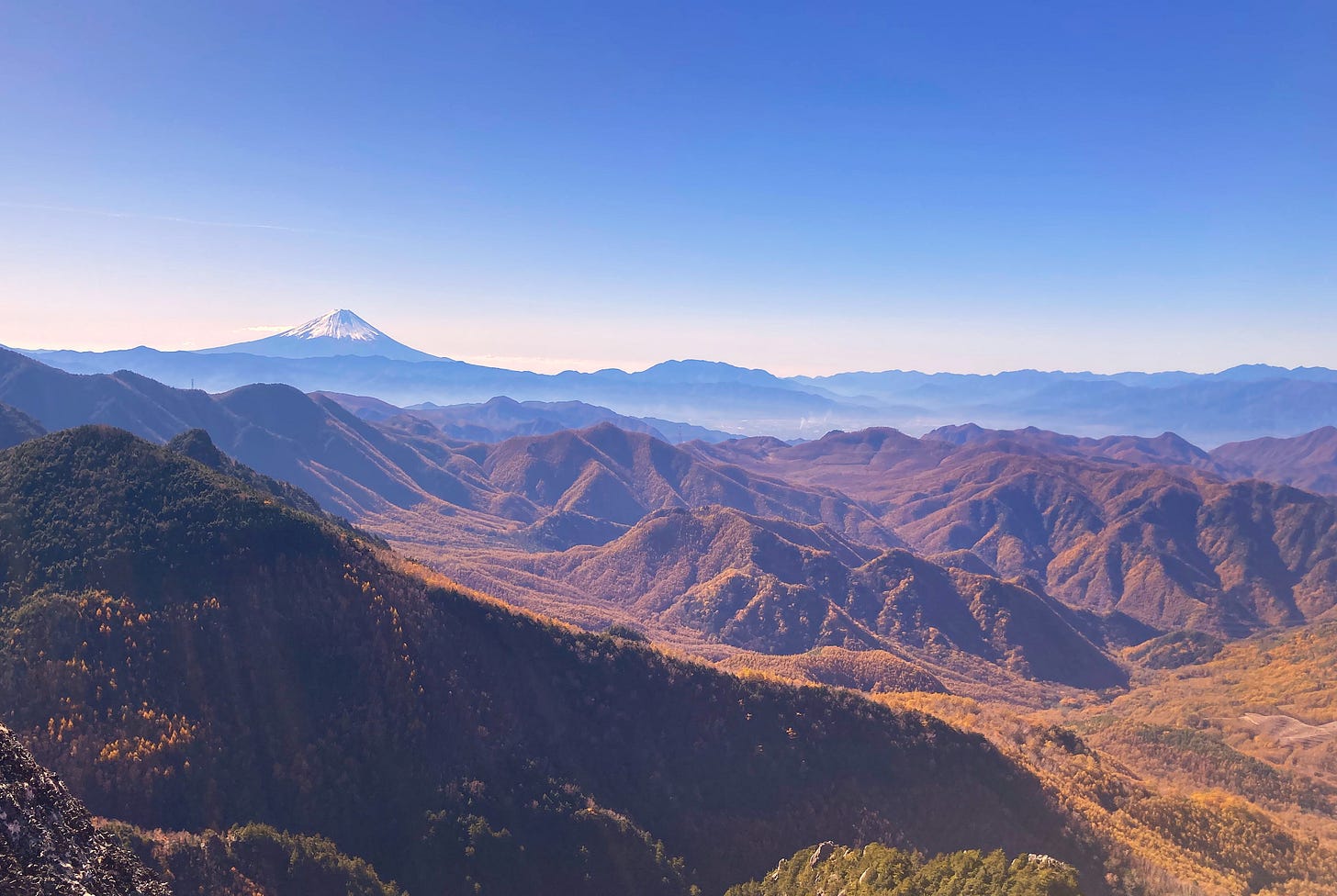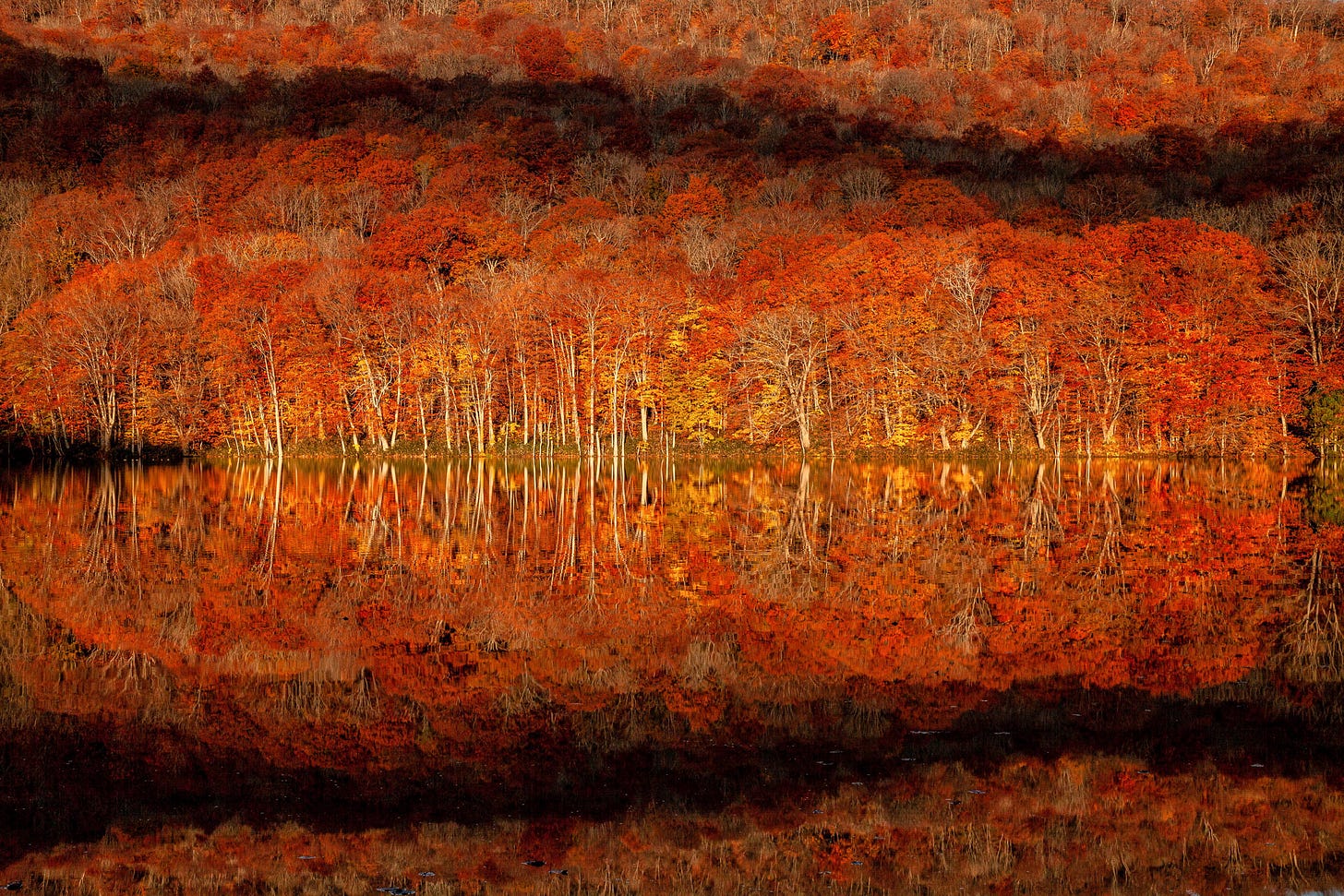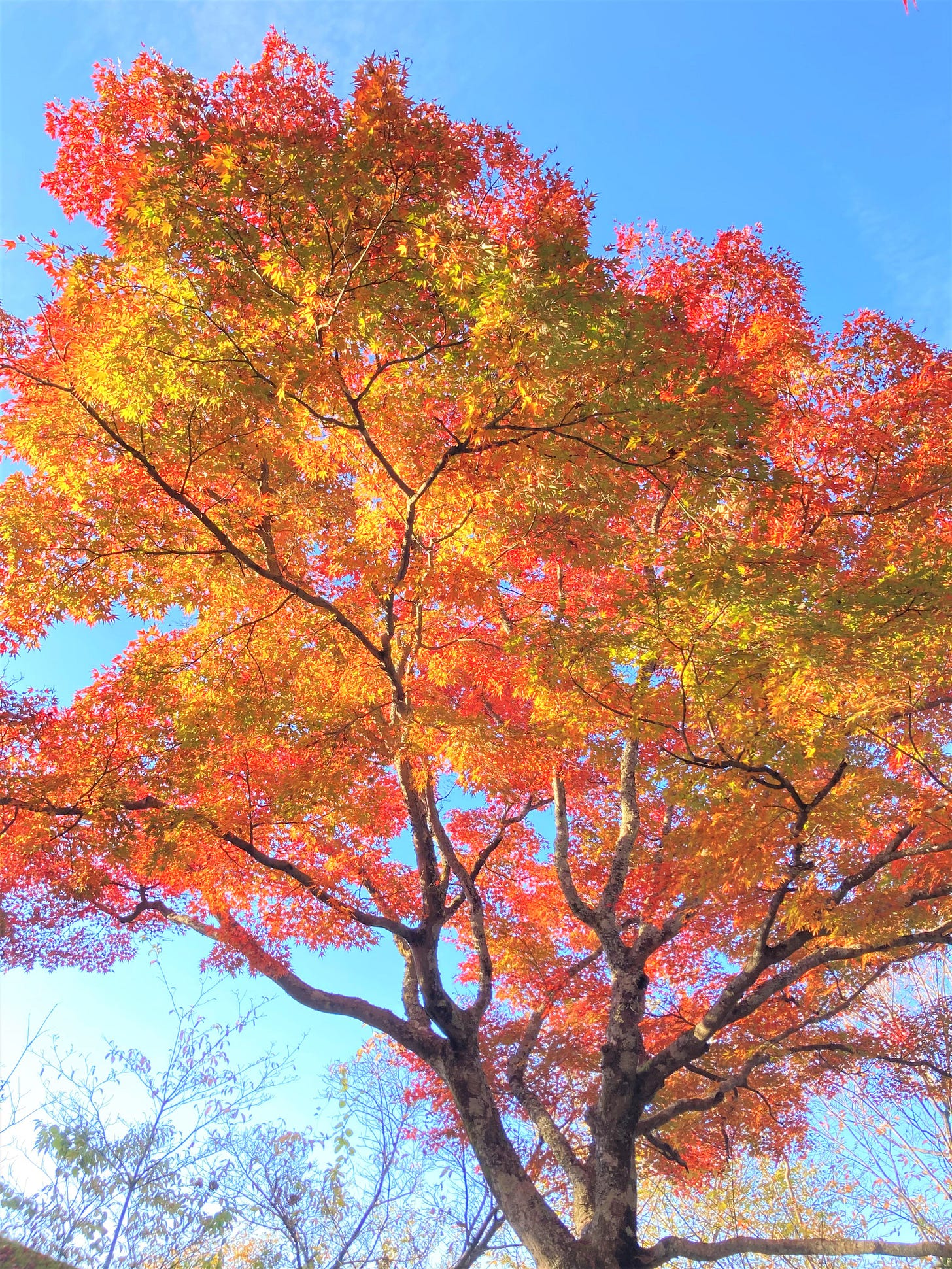#153 Preparation for Autumn Foliage Season
How to ensure you don't miss the peak of Japan's autumn foliage season.
Last week, I wrote about climbing Mount Fuji in summer, but this week, I would like to talk about the autumn foliage season. You may think it's too early to think about autumn when summer hasn’t yet come, but if you're considering a trip to Japan, it's never too early to start planning, even six months in advance. It isn't easy to pinpoint the exact peak season for autumn foliage, like the cherry blossom season in spring. Visiting your destination during the peak foliage season is difficult, even for those living in Japan. This week, I'd like to share my methodology for aligning your visit to Japan with the peak autumn foliage season with the highest probability.

When it comes to autumn leaves, there are two main types when you think about it in terms of visual imagery. There are pristine forests that turn golden yellow and temples and shrines adorned with crimson maple leaves. It depends greatly on what kind of time you want to spend or the photos you want to take. Taking these factors into consideration, I would like to examine three areas: the Tohoku region, which has rich, pristine forests; Nikko and Hakone, which are within a day trip from Tokyo; and Kyoto, which is the dream destination for most tourists when it comes to autumn leaves.
Autumn Foliage Season
Due to the north-south length of the Japanese archipelago, the autumn foliage season is long. The season begins in mid-September in the Daisetsuzan mountain range of Hokkaido, the earliest to see autumn foliage. In Kyoto, there are places where you can enjoy autumn foliage until early December. This way, if you choose the correct location, you can enjoy autumn foliage for over two months. However, unless you plan to take photos in the virgin forests in Akita or Aomori Prefecture, the peak season will likely be concentrated in the latter half of November.
Regarding the two significant trees that add color to the autumn foliage, the yellow ginkgo and the red maple are the most representative. While there are regional differences, it is worth noting that ginkgo trees typically peak from early to late November, while maple trees peak from late November to early December.





